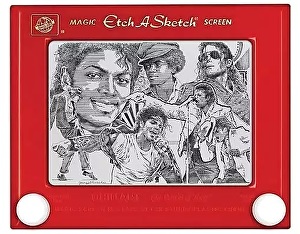This post is by Luann Udell, regular contributing author for FineArtViews. She’s blogged since 2002 about the business side–and the spiritual inside–of art. She says, “I share my experiences so you won’t have to make ALL the same mistakes I did….” For ten years, Luann also wrote a column (“Craft Matters”) for The Crafts Report magazine (a monthly business resource for the crafts professional) where she explored the funnier side of her life in craft. She’s a double-juried member of the prestigious League of New Hampshire Craftsmen (fiber & art jewelry). Her work has appeared in books, magazines and newspapers across the country and she is a published writer.
You don’t have to defend your choice of materials.
In fact, make it a selling point!
A quick return to my series on how to answer the innocent questions, the odd questions, even the hurtful questions our visitors ask.
During one of the discussions on a post in this series, a reader related that someone had dismissed her choice of medium with a disparaging remark”
“It’s just chalk!” Ow!
I remember the very first show I did, selling pens I’d covered with patterned polymer clay. I sold them for $5. Someone picked one up, sneered, “It’s just a cheesy pen covered with some kind of cheap plastic!”, tossed it back onto the table and walked away. (I remember thinking, “Was that absolutely necessary??”)
Sometimes a remark like this comes from another artist. One of the oddest things I’ve found among artists (of all kinds) is the hierarchy assigned to various media.
For example, oil paint is often considered a more “professional” medium than acrylic paints. It’s traditional, it’s harder to master, and it takes time to dry. Once cured, it’s extremely durable. It’s versatile, perfect for mixing and layering, because of that longer drying time. In the hands of a master, it creates spectacular results. Oil paints have been around for centuries, and became the “artistic medium of choice” in the 15th century. Art made with oils usually commands the highest prices in the art world.
More modern acrylic paint, created in the 1940’s, has a slightly less lofty reputation. It dries quickly, doesn’t have such a prestigious history. The very name “acrylic” suggests ‘plastic’, synthetic. Fake.
On the other hand, acrylics are valued more than watercolors, which are valued more than drawings, colored pencil, pastels. And don’t even open the door to photography, that’s not even art. It’s a craft! So are woodblock/linocut/etchings/etc., because you can make hundreds of copies. They aren’t considered “real” art forms.
When I entered the art world, my mind reeled trying to sort out the innuendos and rationale for these hierarchies. My own choice of materials are so non-traditional, my medium is greeted with some suspicion. I don’t get much respect as an artist, until people actually see my work. Even then, people used to pick up a piece and ask what it’s made of. “It’s polymer clay!” I’d beam, and they’d quickly put it down again.
What’s going on here???
Some of this bias is historical, based in tradition. Centuries ago, drawings were considered simply a draft for the “real” art—a painting. Colors were made with Newer art materials may contain more synthetic colors. Some media are easier to master. And some, I suspect, is turf-building: “You don’t use the medium I use, so my work is automatically better than yours!”
But there are plenty of counter-arguments, too. The first artifacts made by humans were shell beads. Yes. BEADS. Early cave art involved drawing, with charcoal or other pigments, i.e., CHALK. Yes, later on, these pigments were mixed with saliva, or oil. But their first application was probably to decorate and color bodies and hair, a practice that still continues in some cultures today.
So what do we say when someone denigrates our medium of choice?
My first response is this:
It’s not WHAT the material is, it’s what you DO with it.
The logic of this is irrefutable.
When precious metal clay, a metal powder in a clay base that can be modeled, formed, and fired with a micro torch, first appeared on the market, I saw this push-back immediately. Some traditional metal workers—sculptors, silversmiths, jewelers, etc.—protested that this was a ridiculous, amateur-targeting material, that cheapened their reputations. Gone were the traditional skills—soldering, casting, chasing, etc. It couldn’t possibly be considered a “real” metalworking medium….could it??
Google PMC artist “Celie Fago” and you tell me. (Spoiler alert: Whatever medium Celie works in, she creates incredibly beautiful work.)
Last week, I showed an artist friend portraits of my kids by a friend. He thought they were oils. Yeah. Colored pencil artist Nicole Caulfield hears that all the time. (See my favorites at http://www.nicolecaulfieldfineart.com/zen-series !)

Nicole Caulfield’s colored pencil work is often mistaken for oils
And my favorite story about art vs. craft came from a potter friend. “If I make a sculpture in clay, it’s considered ‘craft’ ”, she said. “If I send that model to a foundry to be cast in bronze, it’s ‘art’.”
And we have all seen atrociously bad art done with oils, and amazingly beautiful work done in….er, on….an Etch-a-Sketch.
“The Etch-a-Sketch work is by artist George Vlosich.”

A hundred hours and one unbroken line. That’s not easy.
And me? Fiber arts is often considered a craft, or a woman’s medium. Polymer clay is considered a kid’s play material. I had a lot of explaining to do when I first started displaying, exhibiting, and selling my work.
My second, even more powerful response:
I CHOSE this material, and here are the reasons why….
I use polymer because my hands want to SHAPE things, not carve them.
I love using it to create jewelry because even larger works are lightweight, and comfortable to wear.
I can make artifacts that look truly ancient. I have a story to tell, about the roots of our own humanity, inspired by cave art going back a hundred thousand years and more. I want that power and mystery to be an integral part of my work.
Also very important to me–No animals are harmed in the process.

I use polymer clay by CHOICE. It does exactly what I need it to do.
I could not have made this work 50 years ago. Thank heavens for modern materials!
When I began to share WHY I use the materials I use, it became a selling point.
Your homework today, should you choose to accept it, is to take a few minutes to think about WHY you work in your chosen medium. Share your thoughts, and feel free to ask for help, if you need it.
Most of all, embrace your choices. Never excuse or apologize again for your choice of materials, nor your techniques. Something spoke to you the first time you used a brush, or a palette knife, a pencil, or a fistful of clay. It agreed with your inner self, your preferences, your tendencies, the way you want to work, the way you want to create.
Their question—“What are these made out of?”—becomes a powerful point of connection with your potential audience.
Share this with your visitors, and watch your connections grow!


Fiber art is usually on the bottom of the totem pole for fine art. We have a battle in this arena for its acceptance to others who don’t understand the medium or who are unfamiliar with the majesty of it.
Thank you for writing and sharing and shedding light, all of the time! I look forward to all of your thoughts.
Traci
LikeLike
Excellent – it’s no body’s business except your own what you use to bring your imagination to life.
LikeLike
Excellent article and right on. I agree about choosing polymer clay because of the versatility it offers. The possibilities are endless and it can be combined with so many other materials, including my 20-year collection of beads. I find that so much more exciting that just picking up a paint brush.
LikeLike
You are absolutely right. I love your work too.
LikeLike
Thanks for being an ally, Emma, and thank you for your comment!
LikeLiked by 1 person